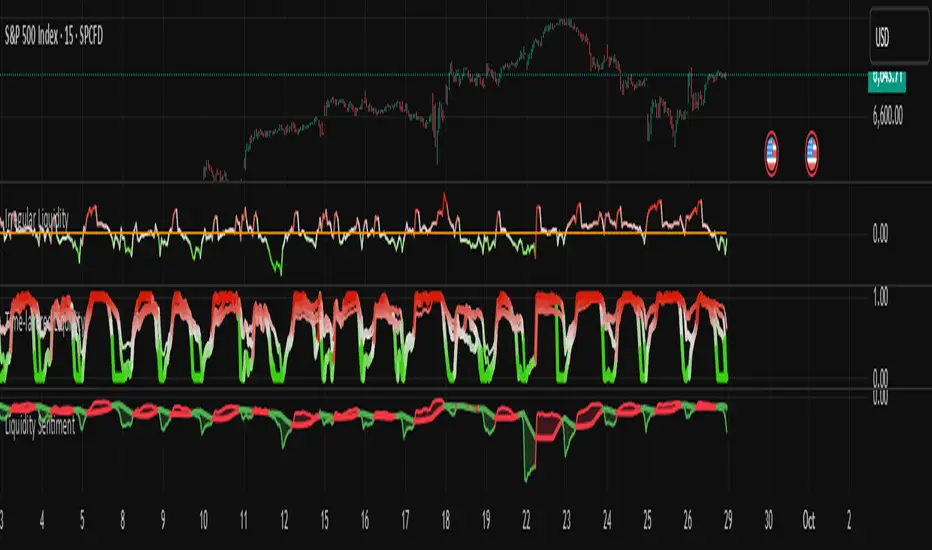Liquidity Sentiment

What does the Indicator show?
A drop of Liquidity Sentiment suggests more traders are willing to pay the Ask, as they are keen to buy. (In this situation, the indicator moves towards the Ask label).
A rising Liquidity Sentiment suggests more traders are eager to sell, and willing to accept the Bid. (In this situation, the indicator moves towards the Bid label).
Logic:
Why does a stock go up?
Because more traders want to buy than sell, creating illiquidity.
Why does a stock go down?
Because more traders want to sell than buy, creating liquidity.
How to use the Indicators settings?
Setting your chart to 5-minute time periods is best for observing intraday price movements.
Setting your chart to 4-hour time periods provides the best longer term view.
Setting the "Indicator - # of SMA Intervals" to a higher number extends the reading frame of the indicator, this depicts sentiment over the specified time period. For example, if the chart is set to 1 day, and the "Indicator - # of SMA Intervals" is set to 5, the indicator shows the Liquidity Sentiment through a simple moving average of 5 days.
What is a Simple Moving Average?
In stock trading, a Simple Moving Average (SMA) is a calculation that takes the arithmetic mean of a given set of data values over a specified number of time periods, to smooth out data and identify trends.
Invite-only script
Only users authorized by the author have access to this script, and this usually requires payment. You can add the script to your favorites, but you will only be able to use it after requesting permission and obtaining it from its author — learn more here. For more details, follow the author's instructions below or contact brucegibbs directly.
Note that this private, invite-only script has not been reviewed by script moderators, and its compliance with House Rules is undetermined. TradingView does NOT recommend paying for or using a script unless you fully trust its author and understand how it works. You may also find free, open-source alternatives in our community scripts.
Author's instructions
Warning: please read our guide for invite-only scripts before requesting access.
Find us at nakeddelta.com
Disclaimer
Invite-only script
Only users authorized by the author have access to this script, and this usually requires payment. You can add the script to your favorites, but you will only be able to use it after requesting permission and obtaining it from its author — learn more here. For more details, follow the author's instructions below or contact brucegibbs directly.
Note that this private, invite-only script has not been reviewed by script moderators, and its compliance with House Rules is undetermined. TradingView does NOT recommend paying for or using a script unless you fully trust its author and understand how it works. You may also find free, open-source alternatives in our community scripts.
Author's instructions
Warning: please read our guide for invite-only scripts before requesting access.
Find us at nakeddelta.com